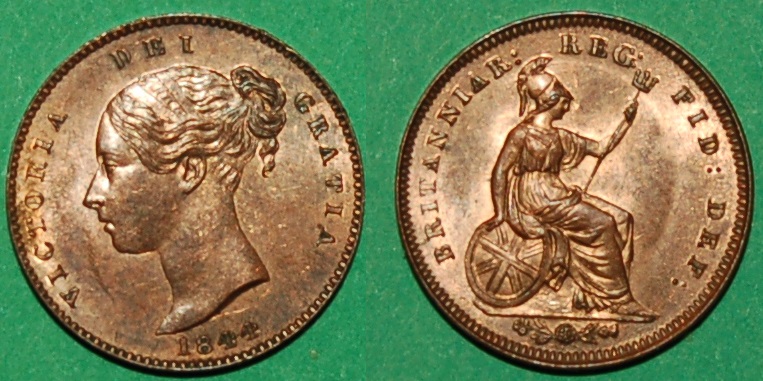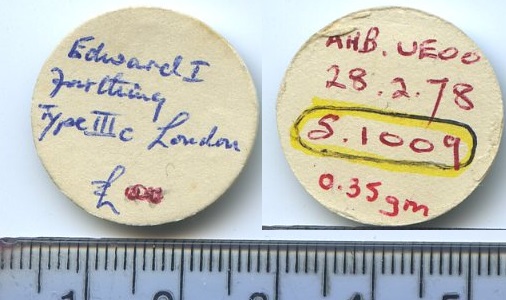-
Posts
12,748 -
Joined
-
Last visited
-
Days Won
340
Content Type
Profiles
Forums
Events
Downloads
Store
Gallery
Articles
Everything posted by Rob
-
I can. 119 circulated 50ps at nearly a fiver and 68 fivers at £15 a pop only adds up to 187 idiots. I see that number every day. He is selling to the whole world.
-
That's what the ebay listing says, as per eBay's multiple similar lots option. In red, centre top. below 'more than 10 available'.
-
Rather worryingly, he has sold 68 already.
-
A difficult one to call from a neutral viewpoint. Whilst realistic pictures as close to that seen in the hand are what people want and try to achieve when imaging their coins, the additional contrast used in catalogues to bring out the detail also helps to highlight the warts. I think it is fair to say that reducing the contrast in order to mask faults is not desirable from either perspective.
-
Flight to the US - £500. Beer - $5. Have a couple and make the trip worthwhile.
-
You can only learn by looking. Nobody is forced to buy anything. Broadly speaking collectors fall in to two groups when it comes to learning - those who gain all their knowledge from looking at eBay and other virtual sources and the second group who opt for practical experience, who do their legwork and physically examine coins. Only by comparing what is available in the flesh can you come to appreciate what consitutes a good example. Whilst a picture is said to speak a thousand words, it is also a very good way of presenting an object in the most favourable light possible, with contract and colours frequently adjusted to hide defects. You need to get a glass on coins and mentally absorb all that you see including prices and grades.
-

"Sergiosilva's non-British Coins"
Rob replied to sergiosilva's topic in Enquiries about Non British coins
That's better. Put them all into one thread. Now take still pictures instead of a video shot. The moving image makes it difficult to see the coin clearly, and this is exacerbated by the fact that the important bit (the coin) is only a couple percent of the total image area. Most of the available space is wasted. Crop the image almost to the edge of the coin, join the pictures together and you will have a non-moving image of both sides that is possible to examine. At present, it is impossible to comment on any coin because a 20 second video only gives 8 or so seconds per side for the viewer to try and follow a randomly moving spot in the middle of the video. When people scrutinise coins, they are looking for both good and bad points. That can only be done with a stable image and may take minutes to consider. Mobile technology is a wonderful thing (or so I have been told), but convenience usually comes at a cost, which in this case renders close examination of the coin impossible. -
A design is adopted and then made legal tender by proclamation. That's it. The legal guarantee of a coin's value stems from the proclamation which is further down the line from a decision on design features. You only need to have a number if all coins are the same size regardless of denomination. Think US banknotes.
-
Correct. Halved rose & castle mark, so post P&Ms' wedding. It is quite a decent example. They were also produced during the reign of Edward VI at York and London, but in that case with the titles starting EDG instead of PZMDG and the York coins have a pierced mullet mark.
-
I wish I had won the two in the Adams sale. Underbidder on both.
-
It's not that bad. I didn't find anything last year, but was quite pleased with the three years prior to that. There is usually something small worth buying even if the larger ticket items aren't available. No fair has a significant advantage over the next. The idea that all the best stuff is kept for certain fairs is a myth. Most people will only buy one or two items, so the thousands on offer are mostly irrelevant. If you find something you want, you will declare it a good fair. And that can happen anytime, anywhere.
-

1948 florin - fake or real?
Rob replied to candrews09's topic in British Coin Related Discussions & Enquiries
Struck on the wrong blank. I have a 1967 that is also too thin and origianlly a blank used for Burundi coinage. It's unlikely to be silver as virtually everyone was using Cupro-Nickel by then. If you send it to the Royal Mint, they might be able to tell you what the host flan was originally used for. -
Another consideration would be the huge number of die sets required which would necessarily involve a number of engravers. I don't have the figures for the number of dies produced, but using back of a fag packet assumptions, a die set would do about 10,000 coins. Between April 1279 and May 1280, London struck nearly £155,000 in pennies at 244 to the £, that's a whopping 37,780,228 coins and would require 3778 die sets. All this would have to be squeezed into roughly a 350 day period given Sunday working would likely be frowned on. Again, this would be 10 die sets (1 trussle & 2 piles) or more per day, i.e 30+ dies a day. It stands to reason that a considerable number of people were employed in the sinking of dies and they would have their own quirky ways. Any large expansion in mint output or a complete recoinage would require the immediate employment of additional engravers. Where would you find them? You can't just magic up a skilled tradesman, but you can poach one from an adjoining country. The coinage of Britain is littered with names from the near continent, so employment of the odd French or Dutch engraver is quite likely, and for some of the odd letters and punches, it might be necessary to examine contemporary continental currency to find a punch link. It might also explain the use of a Lombardic N on a couple of York local dies which Denis highlighted last night. That then offers a possible explanation for some of the slight differences. Idiosyncratic die cutting is inevitable when everything is hand-made so it is possible that some of the differences could be ascribed to individuals because there is no way they would intentionally change the design 12 times in just over a year. We would be looking at new punches replacing old as they wore out. It's very difficult to get away from the concept of cut-off points between each group, but it really is a requirement.
-
Don't know. Maybe we need to completely rethink the series. It is obvious that our assumptions are not entirely correct. Personally, I think a broader approach would be more in keeping, such as the Ed.1 halfpenny 3c-e, where there is not enough distinct detail to categorically say where things stand in terms of the Fox classification. There are other considerations too. The classes are only separated by a month or two in some cases. It is pie in the sky to think there could ever be a clear dividing line in such instances. You really need a documented break in production to clearly define one class from the next and you don't have it. The new coinage started in 1279, but by the middle of 1280 they had already gone through all the class 1s and 2s and were up to 3f, so it doesn't give much time for each sub-class. A guy could leave London with dies for a northern mint and they would almost be obsolete by the time he arrived. How can we be so presumptive to narrow down the classes in the way that we do? There has to be overlap. And none of this allows for any idiosyncrasies an engraver may possess. That could b****r up the classification big time. Thinking along the lines of the Civil War engravers, each man had his own tools and engraving style. It is likely that was also the case 3 or 400 years earlier.
-
Yes, and the G&D crowns don't have it either, without exception. Just goes on physical characteristics.
-
No it's not. Just a ticket that passed through my hands. I always scan in tickets that are assigned and those that I can't attribute in the hope of one day establishing the author's name. I do have other North tickets, but that was the one in the ticket reference library.
-
Interesting question and exactly the same topic that was discussed at lst night's meeting when Denis Martin gave a talk on the 'Enigmatic Varieties of the Episcopal Edward I pennies from York and Durham struck from Local Dies". Again, the first thing I questioned was have we sub-categorized to too great an extent. when you have early and late letters on both sides and based on current classification become mules when mixed, then maybe we need to rethink our strategy. Interesting topic and good fun A big problem with a lot of these 'mules' is the sample size. When only single digit numbers are the norm, can we really be so confident in our rigid classification? I don't think so.
-
There is nothing to say that a coin has to have any denomination indicated as far as I am aware. Coins are proclaimed legal tender on the basis of their description which will be the specification laid down, but to consider a coin without the denomination in the legend or any other component that is usually present to not be valid currency would also require the mint to recall any coins with errors - which they clearly do not.
-
Any tickets with it? Sazama had envelopes, but any North coin originally came with a ticket such as the attached.
-
Ask them to take one up to the Midland this weekend



